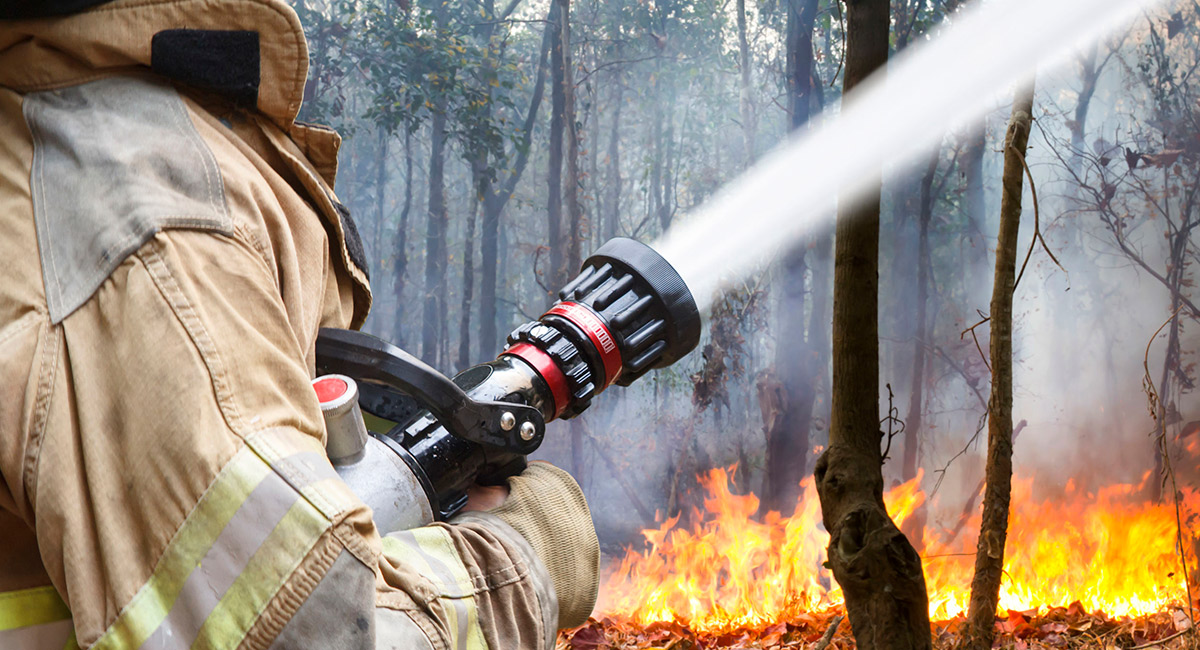As the drought began to set in, Governor Newsom, anticipating another season of more than usual wildfires, approved $536 million in spending on prevention. Relatively speaking, California has seemingly been more proactive lately in searching for fire policy reforms. Over thirty of the proposed bills in the California Legislature 2021-2022 Session pertain to wildfires and fire protection related issues. But an unfortunate truth is that much of this wildfire preparation is jeopardized by poor policies at the federal level of government, and this is especially true for the northernmost counties.
As Skye Kinkade has reported, in recent weeks, Siskiyou and Shasta counties have suffered from five fires, the Lava, Tennant, Tangle, Juniper, and Salt fires. At a point in time, all five of these fires were being battled concurrently.
The leadership duties of wildfire firefighting usually fall to one of two agencies, California’s Cal Fire, or the federal Forest Service. Cal Fire will generally take the lead on fires that start on state or private land. The Forest Service will take the lead on Federal land. This is a source of problems.
The forests in the northern counties are nearly all controlled by the federal government, not the State of California. Almost fifty percent of the total land in California is federally owned. The largest national forest in California is the Shasta-Trinity National Forest, which spans the counties of Trinity, Shasta, Siskiyou, Tehama, Modoc and Humboldt. It is federally controlled, meaning that many of the fire prevention reforms that the State is exploring won’t apply to large swaths of the northernmost counties that are fire prone.
The California State bills that have been introduced cover everything from local assistance grants, changes to the Revenue and Taxation Code (in partial response to PG&E’s negligence in the 2018 Camp Fire), to transferring some fire safety duties to the State Fire Marshal’s Office.
Compared to California’s efforts, the U.S. Forest Service’s fire season readiness falls short and some question the track record of the Forest Service’s response to fires. These criticisms were voiced long before the fire manager of the recent Lava Fire admitted the Forest Service prematurely left the fire, thinking it was extinguished, only for the fire to spark back up, leading to the evacuations of the Lake Shastina area.
Making matters worse, as the fire season has been heating up, thirty percent of the Forest Service’s “hotshot crews”—the highly trained hand crews that are frequently in the most critical areas and receive priority deployment—are understaffed. There are some deep structural problems with the Forest Service as well. Starting in the 1980s and increasing in the mid 1990s, the Forest Service pivoted away from prioritizing forest management and instead moved towards firefighting as its primary duty. The switch wasn’t completely baseless, rather the change was seen as necessary in the wake of several large and destructive fires in the ‘90s.
However, the reality of opportunity costs dictates that as Forest Service resources were increasingly allocated to firefighting, forest management was receiving less attention. According to the U.S. Department of Agriculture (USDA), under which the Forest Service is organized, the cost of wildland fire took approximately 16 percent of the agency’s budget in 1995. It now exceeds 50 percent of the budget and is projected to consume 67 percent of the Forest Service budget by 2025. This means that fire prevention suffers because the time and resources are going elsewhere.
Congress recently tried addressing some of this funding disparity. Starting in Fiscal Year 2020, $2.25 billion was made available to the USDA and Department of Interior for fire suppression. But as PERC researchers Holly Fretwell and Jonathan Woods belabor in their April 2021 Public Lands Report, the earmarked money “does not address the underlying causes of catastrophic fire conditions, nor will it free up funding for forest restoration projects at the pace and scale needed.”
While we wait for extensive Forest Service reform, a number of policy changes could be adopted to aid the firefighting process and protect Californians. Though the intention behind environmental regulation seems prudent, when the unintended consequences result in the destruction of the natural environment, it is wise to reconsider them. Flora and fauna aren’t being protected if they are on fire.
Such examples of counterproductive regulations include the impact assessments the Forest Service must complete as part of the Endangered Species Act and the National Environmental Policy Act. These acts require that the Forest Service engage in consultation before they begin forest management, lest they “modify” a species’ habitat. Compliance with these requirements adds considerable costs to forest management and can be a source of significant delay for the Forest Service. Exemptions for some of these assessments should be issued to mitigate the bureaucratic red tape. Moreover, private parties should be allowed to provide a helping hand without being unduly encumbered. Clean Air Act waivers for controlled burns and more latitude for logging companies to clear trees could also help clean the forest floor.
Californians should push for needed Forest Service reforms, but also our own legislature and agencies can speed up management that will keep our forests healthy and thriving.








